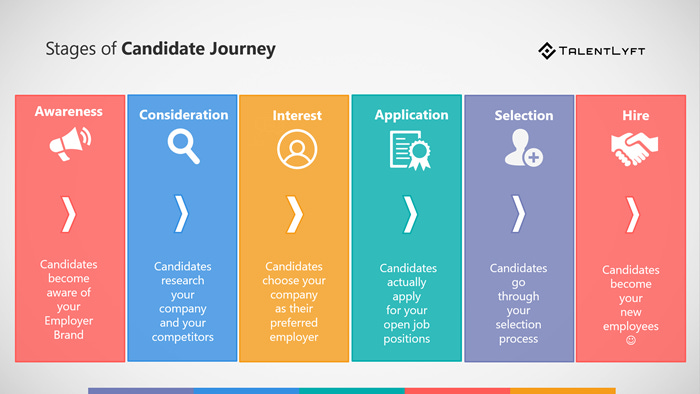Recruitment M.O.T. | The Secrets To Attracting & Hiring Top Talent Revealed!
You know that finding and hiring the right people for your business is essential. But what if you could take your ability to hire to a whole new level?
If you're like most business owners, you know that finding and hiring the right people for your business is essential. But what if you could take your ability to hire to a whole new level?
With the Recruitment M.o.T., you can easily attract and asses talented candidates who are a great fit for your business. In this guide you'll learn how to create a cost-effective and efficient system that works for you, so you can focus on what's important - growing your business!
Sounds great right?
So you’re probably wondering why you need to add a recruitment M.o.T. to an already overflowing to-do list.
I hear you!
The answer is simple.
With a recruitment M.o.T., you’re not only ensuring that you’re getting what your business needs in terms of hiring top talent, but you’re also ensuring that it’s cost and time-effective.
It’s possible that money is being invested into parts of your recruitment strategy that aren’t bringing you any value, so saving money and putting it where it works best is a win-win!
The current employment market is more candidate-driven than ever before, which makes hiring the right talent even more of a challenge. You already know the importance of having a top employer brand and creating a positive candidate experience but to reach that top talent you need, it’s essential to analyse and fully optimize your recruitment process.
Let’s dig in.
So how do you run a recruitment MOT?
Decide On The Focus Areas of Your Hiring Process
If it’s your first MOT then don’t panic! You don’t need to go the whole hog and it’ll depend on your recruitment capacity and team.
Here are some possible focus points:
Take a good look at your employer brand. How are you perceived in the market by potential candidates? Is your brand authentic, transparent, and aligned with your business objectives?
Analyse where you’re posting job descriptions. Are they optimised and gender-neutral? Are they even in the right place to reach your target candidates? Are you using SEO? Review your job posting on 3rd party job boards to see what you can improve upon.
Stages of the hiring process. How many steps are there to take? Is it clear to the candidate what comes next? Do you have all information in each step to answer any potential questions?
Outline Your Candidate’s Journey
This one is essential. As with most things in life, to make a productive and positive change for the people you’re trying to reach is to walk in their shoes. You can do this by recreating your candidate’s journey from their viewpoint.
Make it visual and create one large poster or use a tool like Miro, or Whimsical to map out your prospective candidate's journey.
Don’t get bogged down in the details. You only need to map out the basic touchpoints and stages that the candidate encounters as they go through the hiring process.
Doing this will allow you to see what the process looks like for them and you’ll get clarity on what needs to be improved upon.
Treat your candidates like customers. You’d map out your customer journey without a second thought, so when it comes to those you want inside the company to help build it, it’s just as (if not more) important.
Image Credit: Talentlyft
Chart Your Internal Processes
Think of it as working inside out. Everything that your business does, from your processes, practices, and procedures is seen, heard, and felt by your prospective candidates.
So map out the following:
Your current recruitment process from writing the job ad to and including onboarding your new hires.
A breakdown of what each of these steps looks like which you can easily match to the equivalent step in your candidate’s journey.
How much time and money do you spend on each stage of the process?
All the communication points you have with your candidate.
For example, have you checked how long it takes a candidate to fill out an application? Time is precious for all of us so take a look at your application process (get someone in your company to apply) to see how long it takes and if there are any frustrating or unnecessary steps along the way.
A whitepaper on how candidate experience is transforming HR found that a massive 83% of job seekers feel that 15 questions are ample. Yet only 53%of companies pose fewer than 15 questions.
Almost all of us have applied for jobs where we fill in a detailed form with our experience, qualifications, reasons we want the role, and why we would be a good fit, only to have to do the same thing in a cover letter as well (not to mention our CV which includes our experience and qualifications already).
Evaluate whether you need all the questions you’ve posed, see which ones you can shorten, and check whether you can remove certain aspects of the process.
Also, check if you’re responding to your applicants promptly. According to a study on workplace trends, a whopping 80% of prospective candidates wouldn't apply to a company that wasn’t communicative — especially regarding their application forms.
On this point, maybe you’re finding it challenging to respond so fast in which case a friendly automated and ideally, personalised email flow would ensure that candidates know where they stand.
Now that you have this overview from both your candidate’s journey and your internal process it’ll be crystal clear which parts of your current strategy need optimizing, refining and upgrading. Now doesn’t that let you breathe a sigh of relief?
What Data You Can Quantify
Data is as important in the recruitment process as it is in everything else in your business.
It lets you know what is working and what isn’t. How much time is invested and to what outcome and the cost and value of your current strategy?
Look into the following:
Time to hire: How long is it taking your company to fill a role?
Candidate decrease: How many candidates drop out of the process and at what point do they drop off? Many leaving at the same point will give you more than a clue of what’s not working.
How many people are applying on mobile vs desktop? Is there a difference in their experience?
Indeed or LinkedIn: From which job ad platform are they applying? Where are you spending your money and what value are you getting for it?
Job offer to acceptance percentage: How many candidates are fully invested and accepting your offers?
These different metrics are extremely valuable for your recruitment MOT. They’ll provide you with important insights that you can use when looking to improve your hiring processes.
Qualitative Data Analysis
Whilst the quantitative data above gives you the facts that you need, qualitative data (i.e. soft data) will help you answer the question “why”.
This type of soft data is understood by asking for feedback from the very people you’re engaging.
For example:
Reaching out to a candidate who leaves the hiring process early and asking them why they dropped out. Since they’re no longer in the running they're likely, to be honest, and upfront
When a candidate has applied you can ask them for feedback on the application process and how they felt about it
Asking for opinions about your website or more specifically your careers page. Did the candidate find everything they needed there?
You can ask candidates for comments in general on what worked well during the application process and which parts were more challenging
Yes, we know you’re probably thinking this is going to take up a lot of effort but you’ll find it well worth it! Without it, you can’t fully understand the quantitative data and make the changes needed to succeed. With it, you’re armed and fabulous and your candidates will see that too.
Speak To Those In The Know (AKA Your Recruitment Team)
You’d surely do this anyway but we feel it’s worth pointing out that you’d do well to include your recruitment team when planning this process as they have their expertise and ideas to bring to the table.
Ask them insightful questions such as:
How long does it take candidates to move through each step of the process?
How much effort is involved etc?
This will give you a true picture of what you’re working with and what needs to be optimised.
It might be that many things are working as they should and it’s just a few tweaks needed here and there to improve the candidate’s experience!
Check Out The Competition
Have a look at your competitor’s careers page — are they offering some information you aren’t?
Do they have a better employer brand?
Are they using hyper-personalisation for a targeted and individual approach to candidates?
What does the candidate experience look like for them?
Decide How You Will Evaluate The MOT
Use the timeless SMART process, Specific, Measurable, Achievable, Realistic, and Timely.
For each section of the MOT make sure the goals fit the SMART goals, and deliverables, and use KPIs to ensure you’re staying on track.
What will a successful MOT look like for you?
Most likely it’ll highlight what you’re doing right, which parts need more optimisation, why they need it, and how you plan to achieve it.
Grade Your Results By Creating A Scorecard
Here you’re creating your evaluation form to standardise your process
A quantitative scorecard would include for example:
Exposure –views, impressions, backlinks
Engagement – time spent on a page, clicks, rating, comments
Conversion – return visits, click-throughs, applications
A qualitative scorecard would include for example:
Consistency – Is the application process and communication consistent with your brand’s style and tone?
Clarity and accuracy – Is it clear and accurate?
Discoverability – Does the layout of the information support key information flows that your potential hires need?
Engagement – Does it use the appropriate techniques to influence or engage candidates (hyper-personalisation is a top tool to instantly improve engagement so look into this and thank us later).
Relevance – Does the content meet the needs of all intended user types?
A recruitment MOT is a crucial part of your hiring process so that you know if your efforts and money are going to yield the results you want and need for your business.
All those unanswered questions you may have, is our careers page engaging and informative? What makes our candidates drop off during the process? will all be answered and backed by collected data?
As a result, you’ll have created a high-functioning and seamless process that strengthens your employer brand internally and externally and ensures you hire faster and convert more candidates to hires you to need to take your business to the next level!
Finding the right talent is like finding a treasure chest at the end of a rainbow. 🌈 And, guess what? I've got a map!
A map that could take your hiring skills to dazzling new heights! Curious to find out more? Let's unlock the secrets together.





